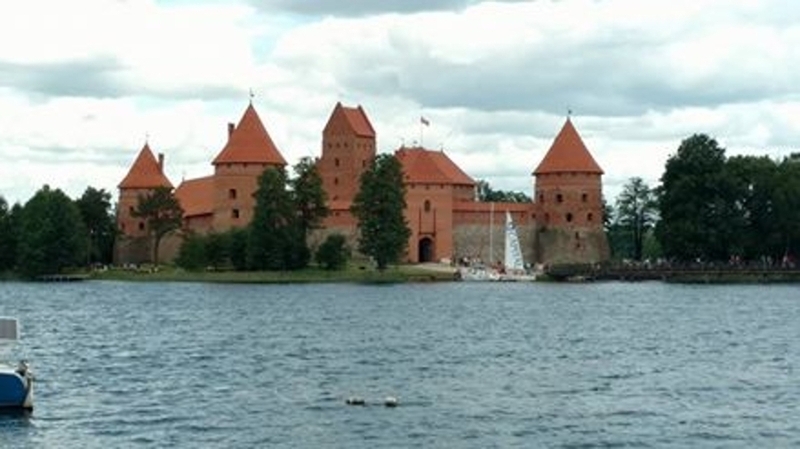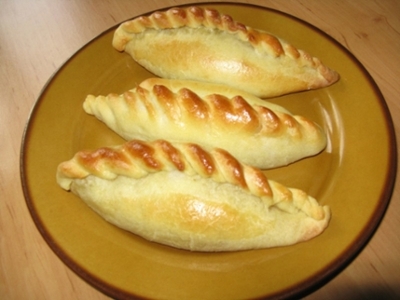Week 2: Historical Sightseeing
This past weekend I took a quick train ride to the premier tourist attraction in the area: Trakai.
Trakai is a small town roughly 20 kilometers west of Vilnius, built on several islands connected by wooden bridges and surrounded by a number of azure lakes. The town is dominated by Trakai Island Castle, which was built in the Fourteenth Century by Grand Duke Kęstutis. The castle has a definite fairy tale quality, with its red towers silhouetted against a backdrop of pristine water and blue sky. I was absolutely thrilled to tour the castle, and it did not disappoint. In the courtyard several “knights” demonstrated the uses of a variety of medieval weaponry and there was an archery range for more demonstrations. Much of the castle was turned into a museum. I must admit, many of the museums I have attended so far in Vilnius have not quite struck the proper balance between things to read and things to look at, with informational placards as far as the eye can see, but very few actual artifacts. This museum, however, got the balance right and also included many interesting historical items.

The town itself has a pleasant and quaint quality. On this day, there were a great many craft tents set up, with all kinds of wares, from salted fish heads to bead necklaces. As one might expect, the primary draw for the locals is the water. Water polo, kayaking, and sailing are all very popular.
The town also has an interesting multicultural history. Under Vytautas the Great, Trakai served as the de facto capital of Lithuania, as the Grand Duke spent more time there than in the official capital of Vilnius. Following a military conquest in Crimea in 1398, Vytautas brought back many Karaim families to settle in Trakai. Karaims are a small Turkic-speaking religious and ethnic group, and the ancestors of those first Karaim families still reside in Trakai. For a long time the Karaim community in Trakai was granted self-government under the so-called Magdeburg rights, and Trakai largely operated as an autonomous region within Lithuania. This Turkic influence is still very apparent today, including in the food. The unofficial dish of Trakai is the Kibinai (very tasty) which are Turkic pastries filled with mutton and onions.

This week I also went with one of my colleagues to explore a few of the villages around Vilnius. We first went to Traku Voke and visited the manor of the counts Tiskeviciai, which was recently the filming location of the BBC’s adaptation of “War and Peace.” We also visited Lentvaris and a palace previously owned by several prominent Lithuanian families. I am sorry to say that both palaces have seen better days. The owner of the palace in Lentvaris went bankrupt during the financial crisis in 2008, and the palace passed to the bank, which has done nothing with the property. Broken glass was everywhere, all of the windows were smashed, and the doors were boarded up. Several teenagers sat on the front steps and drank.
This prompted some sober reflection (and some candid thoughts from my colleague) about how a nation treats its cultural heritage. Behind the Vilnius Cathedral is the Palace of the Grand Dukes of Lithuania. It is a very impressive building . . . that was built in 2009. Many historians opposed its construction due to the lack of records about how the original palace actually looked and the fact that many authentic historic buildings (like the ones I visited) were in critical condition. Many non-historians opposed its construction because it was financed by the state, and built by a construction company belonging to one of the President’s relatives. Now, the palace is a popular site for tourists. This really illustrates the extent to which tourism, and the profit that can be gained from it, drives how history is preserved by the current generation, and therefore perceived by later ones.